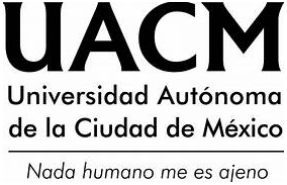The City and its Waste. Notes for Reconfiguring the Concept of Heterotopia
DOI:
https://doi.org/10.29092/uacm.v12i28.48Keywords:
Heterotopia, urban space, waste, sacredAbstract
This paper aims to characterize, for the social-ensemble that negatively defines them, the marginal urban spaces stigmatized in terms of their structuring value. We state that these spaces must be understood according to the system they integrate with pure and neutral spaces. Based on an critical review of the concept of heterotopy, we state that these sites of insignificant relative weight, in the material and political economy of contemporary cities, become essential for their symbolic and affective economy. These spaces accomplish the socially effective —and humanly cruel— task of setting the lower limits of the urbanensemble, which takes consistency by their sustained expulsion. By embodying the radical exterior of contemporary cities, these spaces also act as the cathartic and projective locus of the collective imagination and passions that, at the same time, feed from them and discharge against them.
Downloads
References
Bachelard, G. (2000), La poética del espacio, Buenos Aires: Fondo de Cultura Económica (FCE).
Barthes, R. (1993), “Semiología y urbanismo”, en Roland Barthes, La aventura semiológica, Buenos Aires: Paidós, pp. 257-266.
Bataille, G. (1976), L’Erotisme, en Georges Bataille, OEuvres complètes, t. viii, París: Gallimard.
____(1976a), La notion de dépense, en Georges Bataille, Œuvres complètes, t. ii, París: Gallimard.
____(1976b), La structure psychologique du fascisme, en Georges Bataille, OEuvres complètes, t. ii, París: Gallimard.
____(1976c), La souveraineté, en Georges Bataille, OEuvres complètes, t. viii, París: Gallimard.
____(1967), La part maudite, París: Seuil.
Bentham, J. (1995), The Panopticon Writings, Londres: Verso.
Caillois, R. (1949), El hombre y lo sagrado, México: Fondo de Cultura Económica (FCE).
Caldeira, T. (2000), Cidade dos muros: crime, segregação e cidadania em São Paulo, São Paulo: Editora 34.
Defert, D. (1997), “Foucault, Space, and the Architects”, en Politics/Poetics. Documenta X–The Book, Ostfildern-Ruit: Cantz, pp. 274-283.
Durkheim, E. (1993), Las formas elementales de la vida religiosa, Madrid: Alianza.
Foucault, M. (1994), “Des espaces autres”, en Michel Foucault, Dits et écrits, t. iv, París: Gallimard, pp. 752-762.
____(1989), Vigilar y castigar. El nacimiento de la prisión, Buenos Aires: Siglo xxi.
____(1980), “El ojo del poder”, en Jeremy Bentham, El panóptico, Barcelona: La Piqueta, pp. 9-26.
Greimas, A. (1979), Sémiotique de l’espace, París: Denoël-Gonthier.
Guarrasi, V. (2001), “Paradoxes of Modern and Postmodern Geography: Heterotopia of Landscape and Cartographic Logic”, en Claudio Minca (ed.), Postmodern Geography, Londres: Blackwell, pp. 226-237.
Hetherington, K. (1997), The Badlands of Modernity: Heterotopia and Social Ordering, Londres: Routledge.
Hugo, V. (2003), Los miserables, México: Porrúa.
Johnson, P. (2006), “Unravelling Foucault’s ‘Different Spaces’”, en History of the Human Sciences, vol. 19, pp. 75-90.
Lacan, J. (1988), El seminario. Libro 7, La ética del psicoanálisis, Buenos Aires: Paidós.
____(1999), “El estadio del espejo como formador de la función del yo…”, en Jacques Lacan, Escritos 1, México: Siglo xxi, pp. 86-93.
Lash, S. (1990), Sociology of Postmodernism, Londres: Routledge.
Lefebvre, H. (2003), The Urban Revolution, Minneapolis: University of Minnesota.
Marx, K. (2002), El dieciocho brumario de Luis Bonaparte, Madrid: Alianza.
Mauss, M. (1979), Sociología y antropología, Madrid: Tecnos.
Mumford, L. (1961), The City in History, Nueva York: Harcourt, Brace and World.
Ritter, R., y Knaller-Vlay, B. (eds.) (1998), Other Spaces: The Affair of the Heterotopia, Dokumente zur Architektur 10. Graz, Austria: Haus der Architektur.
Shields, R. (1991), Places on the Margin: Alternative Geographies of Modernity, Londres: Routledge.
Soja, E. (1996), Thirdspace, Oxford: Blackwell.
____(2000), Postmetropolis: Critical Studies of Cities and Regions, Oxford: Blackwell.
Watson, S., y Gibson, K. (eds.) (1995), Postmodern Cities and Spaces, Oxford: Blackwell.
Published
Issue
Section
License
This Journal is licensed under Creative Commons Mexico 2.5. It is allowed to reproduce and disseminate the contents of the Journal for educational or research purposes, not for profit, as long as they are not mutilated and cite the source (Andamios, Revista de Investigación Social) and the author.
The copyright of the articles published in Andamios, Revista de Investigación Social are transferred by the author(s) to Universidad Autónoma de la Ciudad de México when the originals have been accepted, so that they are published and distributed both in the printed and electronic versions of the Journal. However, as established by law, the author(s) retains their moral rights. The author(s) will receive a form of assignment of copyright that they must to sign when their original has been accepted. In the case of collective articles, the signature of one of the authors will suffice, provided that the latter has obtained the consent of the others.
Authors may use the material of their article in other works or books published by themselves, with the condition of quoting Andamios as the original source of the texts.
The articles contained in this publication are the responsibility of their authors and do not compromise the official position of Andamios, Revista de Investigación Social of the Universidad Autónoma de la Ciudad de México.


